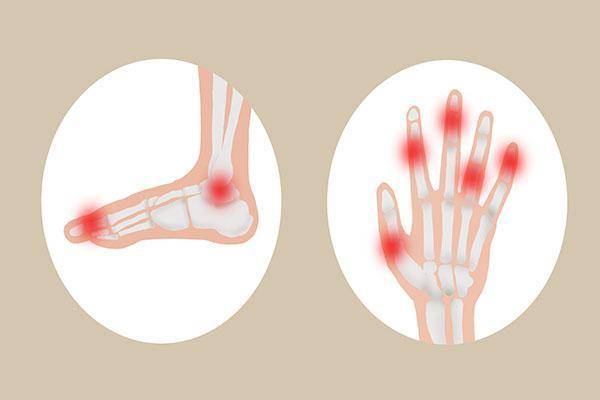High uric acid is another major chronic disease after the “three highs” and it easily triggers gout. Once it occurs, there will be tearing-like pain in the joints throughout the body. According to statistics, there are about 120 million high uric acid patients in China. Many people find out during physical examinations that despite their efforts to control it, uric acid levels have risen again. Complaints like this are often heard in daily life. If you don’t want to trigger gout, you should promptly understand these four factors that trigger gout.
Where does uric acid come from?
Uric acid is present in everyone’s body, with 20% coming from food and the remaining 80% being “endogenously produced” by the body through the metabolic products of amino acids and gases. Uric acid is the product of purine substances, so people are constantly producing uric acid every minute to maintain the body’s internal balance. However, when the production exceeds the elimination, high uric acid levels occur, making it a metabolic disease.
Elevated uric acid levels may cause worries about gout attacks. So, what are the reasons for elevated uric acid levels?
Eating too well
20% of uric acid comes from food. Consuming large amounts of high-purine foods increases the body’s metabolic stress. Common foods that induce gout include seafood, meat broths, alcohol, and animal entrails.
Intense exercise and lack of exercise
The impact of a sedentary lifestyle on the body’s metabolism is not to be underestimated. Prolonged sitting affects metabolism, leading to the accumulation of excess uric acid in the body that cannot be excreted, ultimately forming nodules in the body’s joints. Many are puzzled about why intense exercise can cause elevated uric acid levels. Sweating profusely can remove excess water from the body, but uric acid can only be excreted in urine. Different levels of uric acid are present in different volumes, and anaerobic exercise can inhibit kidney excretion.
Family inheritance
Many find it hard to understand why they are targeted by high uric acid despite maintaining good lifestyle habits. If a family member has uric acid metabolism disorders, stubborn hyperuricemia may occur, with data showing that 70% of hyperuricemia is genetically related.
Long-term use of diuretic drugs
High uric acid is a metabolic disease that undergoes renal metabolism through the renal glomerulus and is excreted. In this process, taking medications can lead to abnormal excretion. Drugs such as aspirin and diuretics can inhibit uric acid metabolism, so following the doctor’s advice in medication usage is essential to determine if your body is suitable for such drugs.
High uric acid does not always develop into hyperuricemia. As long as the uric acid levels are below 560, drug treatment is generally not needed. In daily life, adjusting the following two points is beneficial:
Drink more water and don’t hold urine
Drinking water is also a way to boost body metabolism. Consuming more than 1500 milliliters of water per day can aid uric acid metabolism. Adequate water intake inevitably leads to increased urine volume. Holding urine due to work reasons can actually elevate uric acid levels. Therefore, promptly relieving yourself when the need arises is important. If the pH value is above 6.5, consider supplementing with soda water to alkalize urine.
Stick to aerobic exercise
Neither lack of exercise nor excessive exercise is advisable. What to do? Determine the right exercise duration, preferably not less than half an hour but not exceeding one hour. Opt for moderate-intensity aerobic exercises such as swimming and jogging. High-intensity exercises like jumping rope, basketball, and badminton are not recommended.
In addition to the above, weight loss, body control, reducing intake of high-purine foods, staying away from tobacco and alcohol, avoiding arbitrary medication usage, all contribute to uric acid metabolism. However, if uric acid levels are excessively high and symptoms are present, prompt intervention and treatment are necessary.


